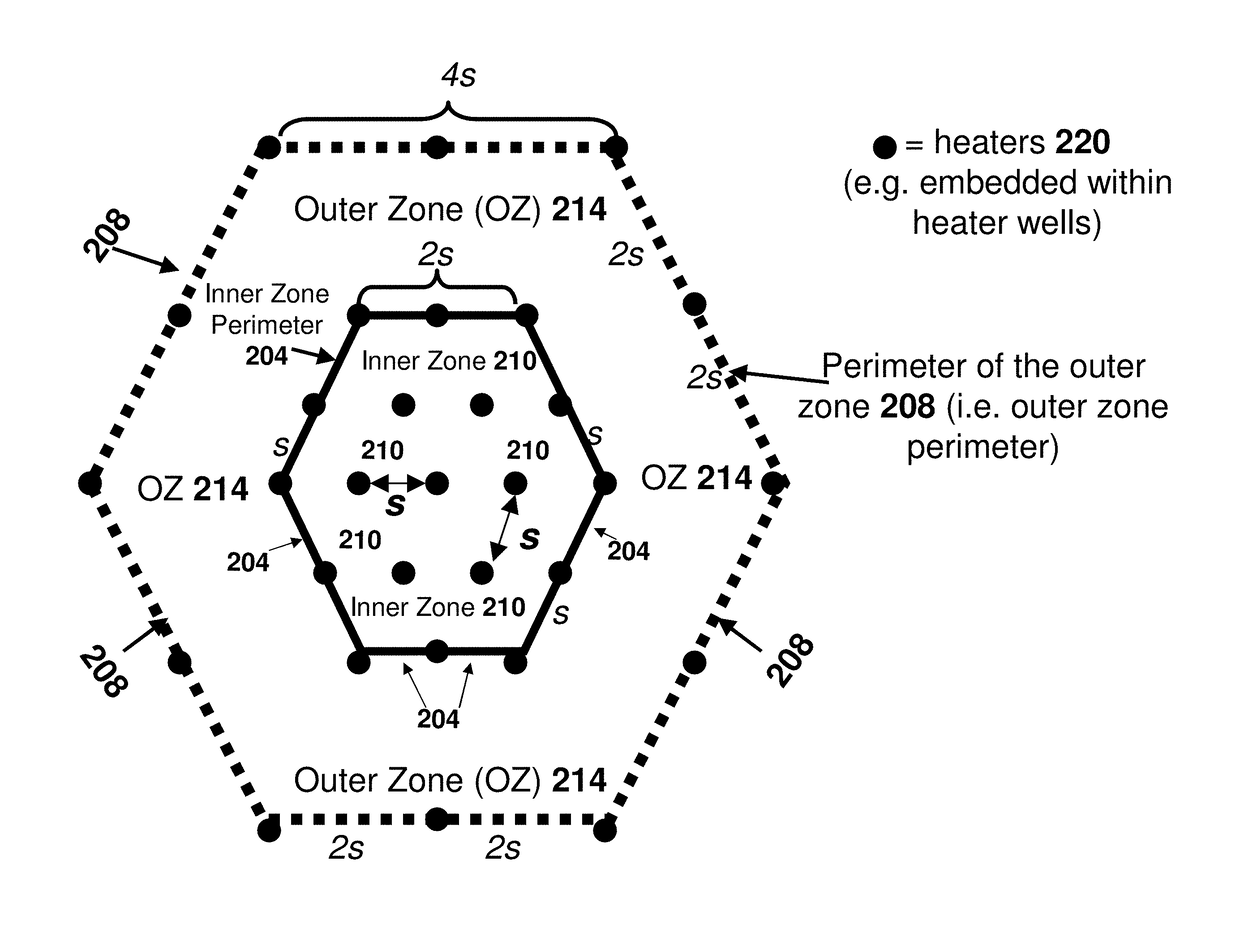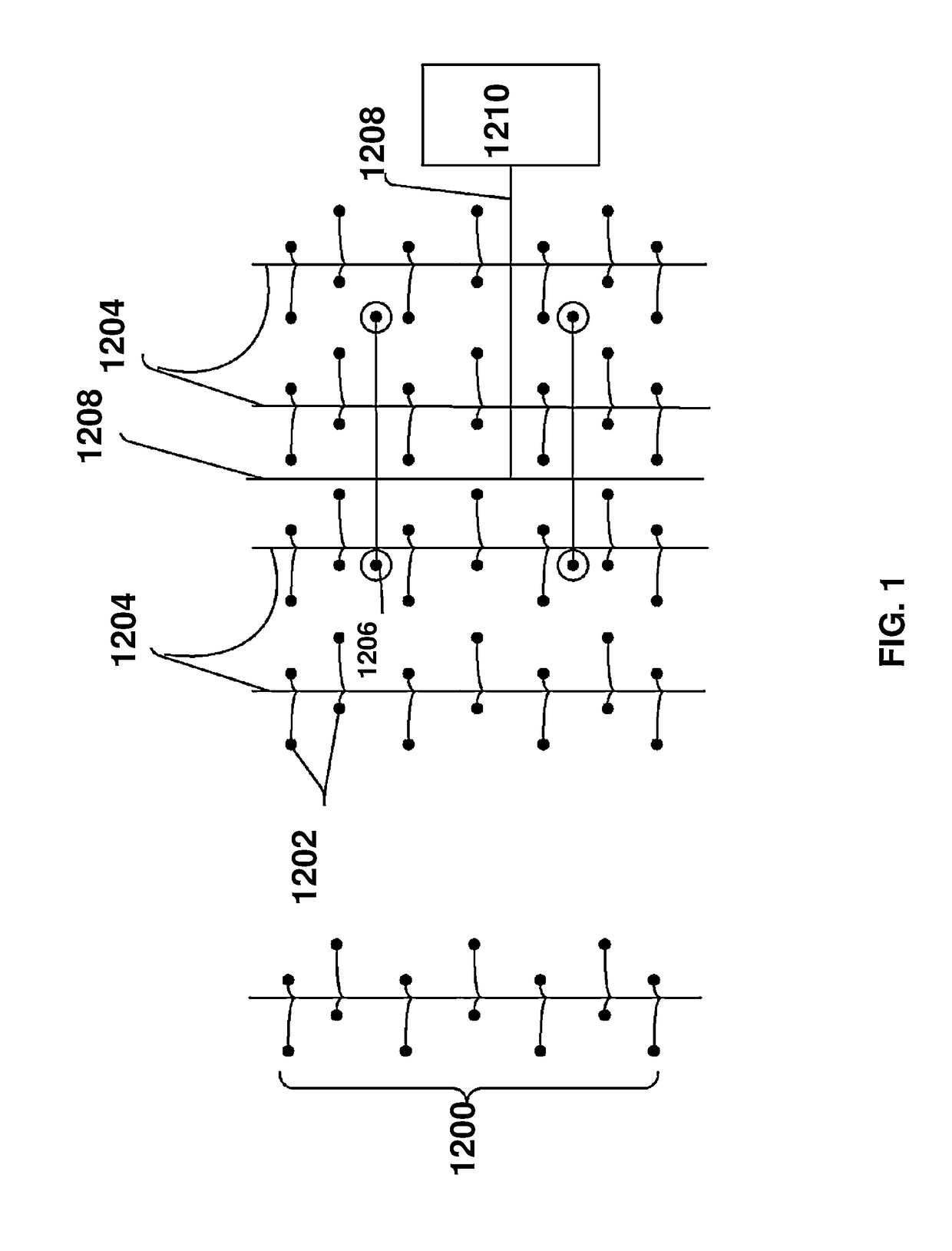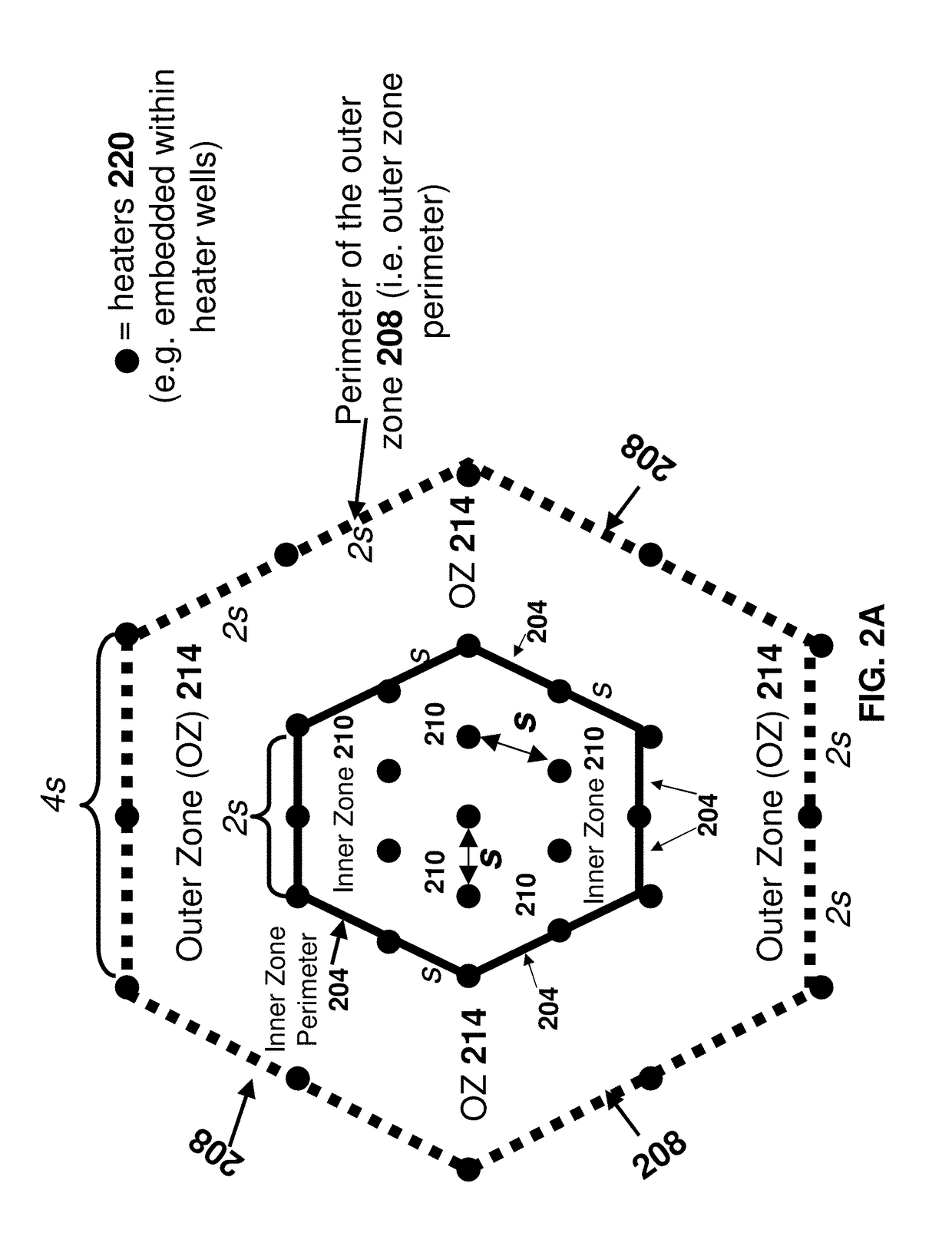Heater pattern for in situ thermal processing of a subsurface hydrocarbon containing formation
a hydrocarbon containing formation and thermal processing technology, applied in the direction of fluid removal, earthwork drilling and mining, borehole/well accessories, etc., can solve the problems of high cost of mining and upgrading tar sand, high cost of upgrading, and difficulty in achieving thermal processing effect, and achieve the effect of significantly faster hydrocarbon fluid production rate and high spatial density
- Summary
- Abstract
- Description
- Claims
- Application Information
AI Technical Summary
Benefits of technology
Problems solved by technology
Method used
Image
Examples
Embodiment Construction
[0017]Embodiments of the present invention relate to heater patterns and related methods of producing hydrocarbon fluids from a subsurface hydrocarbon-containing formation (for example, an oil shale formation) where a heater cell may be divided into nested inner and outer zones. Production wells may be located within both zones. In the smaller inner zone, heaters are arranged at a relatively high spatial density while in the larger surrounding outer zone, a heater spatial density is significantly lower. Due to the higher heater density, a rate of temperature increase in the smaller inner zone of the subsurface exceeds that of the larger outer zone, and a rate of hydrocarbon fluid production ramps up significantly faster in the inner zone than in the outer zone.
[0018]The overall density of heaters in the heater cell, considered as a whole, is significantly less than that within the inner zone. Thus, the number of heaters required for the heater pattern is substantially less than what...
PUM
 Login to View More
Login to View More Abstract
Description
Claims
Application Information
 Login to View More
Login to View More - R&D
- Intellectual Property
- Life Sciences
- Materials
- Tech Scout
- Unparalleled Data Quality
- Higher Quality Content
- 60% Fewer Hallucinations
Browse by: Latest US Patents, China's latest patents, Technical Efficacy Thesaurus, Application Domain, Technology Topic, Popular Technical Reports.
© 2025 PatSnap. All rights reserved.Legal|Privacy policy|Modern Slavery Act Transparency Statement|Sitemap|About US| Contact US: help@patsnap.com



